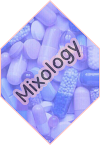Symptoms of a serious blood clot should never be ignored
What is a blood clot?
It collects cells and protein in the blood, and it helps a blood clot reduce bleeding when it is injured. It usually dissolves when it heals, but if it remains or forms unnecessarily, it could block or block an entire blood vessel.
What problems might it cause?
An unexpected clot can lead to serious problems or even death, it may cause a heart attack or stroke, and you may feel pain and swelling if it forms in a vein. A blood clot forming deep in your body is called a deep vein thrombosis (DVT). A clot that forms in the lung is called a pulmonary embolism, and both are medical emergency cases.
Risk factors
You may develop a blood clot if you experience a broken bone or a severe muscle strain. Sometimes, however, you may not know why this happened or even not realize it happened. However, there are cases in which you are more likely to have a stroke if you:
- Recovering from surgery or forced to sit for many hours on a flight or in a wheelchair.
- Obese or overweight.
- Have diabetes or hypercholesterolemia.
- She is over 60 years old.
Symptoms of a blood clot should never be ignored - what organs of the body may a blood clot be affected - deep vein thrombosis - sudden severe pain of a clot
Symptoms of a blood clot
Swelling:
The clot may get bigger in the vessel and cause it to swell when the blood flow slows or stops. It is often a sign of deep thrombophlebitis if it forms in the lower leg or calf, but it may form in your arm or abdomen. A third of people experience swelling - even after it goes away - and sometimes pain and skin ulcers as a result of blood vessel damage.
skin color:
Your arms or legs may appear blue or red if the clot closes the veins in them. Also, your skin may remain pale as a result of blood vessel damage later, the pulmonary embolus may make your skin pale, blue, and moist.
the pain:
Sudden, severe pain may mean that the blood clot has broken apart and caused a pulmonary embolism, or it may be a sign of a heart attack due to a clot in an artery, in which case you may also feel pain in your arm, especially the left arm. The clot is often painful where it forms, for example in the leg, stomach, or under the chest wall.
Breathing problems:
This is a very important symptom, it may be a sign of a stroke in the lung or heart, your heart may also be racing or you may feel sweaty or faint.
Clot sites
Depending on where it is formed, a clot may cause different symptoms.
Lung:
Pulmonary embolism may cause a rapid pulse, chest pain, coughing up blood, and shortness of breath. Go to the hospital right away.
In some cases, the victim may not have any symptoms as well.
the heart
A blood clot in the heart may cause symptoms similar to those of a pulmonary embolus, but in a heart attack, you may also experience nausea and dizziness along with chest pain. Either way, seek help or hurry to the hospital immediately.
the brain
The pressure rises when blood cannot flow normally, and severe blockage can sometimes lead to an outbreak. Brain cells begin to die in minutes due to the lack of oxygen from the blood. A stroke in the brain can cause headache, confusion, seizure, trouble speaking, and sometimes weakness on one side of the body.
Belly
You will likely not have any symptoms at all. The vessel that connects the blocked veins in the stomach or esophagus in the throat may rupture and leak blood, causing great pain. You may vomit or vomit blood, and your stools may look unusually black and smelly.
the college
Also called a renal vein thrombus, these clots usually grow slowly and often in adults. You likely won't have symptoms unless a piece of the clot breaks off and lodges in your lung. It rarely forms quickly, especially in children, causing nausea, fever, and vomiting. You may also experience bloody urination and lack of urine, sometimes.
If you are expecting a blood clot
See your doctor or go to the emergency room right away, as a blood clot can be fatal and you won't be sure of its presence without being tested. Your doctor may give you medication to dissolve a thrombus or perform a surgical catheter by passing a thin tube to the site of the clot to dissolve it.
Prevention instructions
You can reduce the risk of a stroke. First, maintain a healthy weight and correct diet, exercise regularly, and also:
- Do not sit or remain still for a long time, especially after a long flight or surgery.
- If you work in an office, get up and move around every two hours at least, bend your legs, feet, and fingers across your chair.
- Check that socks or tight, compressed clothing allows your blood to flow.
- Ask your doctor if you need to take an anti-clotting medication called an anticoagulant.









0 Comments